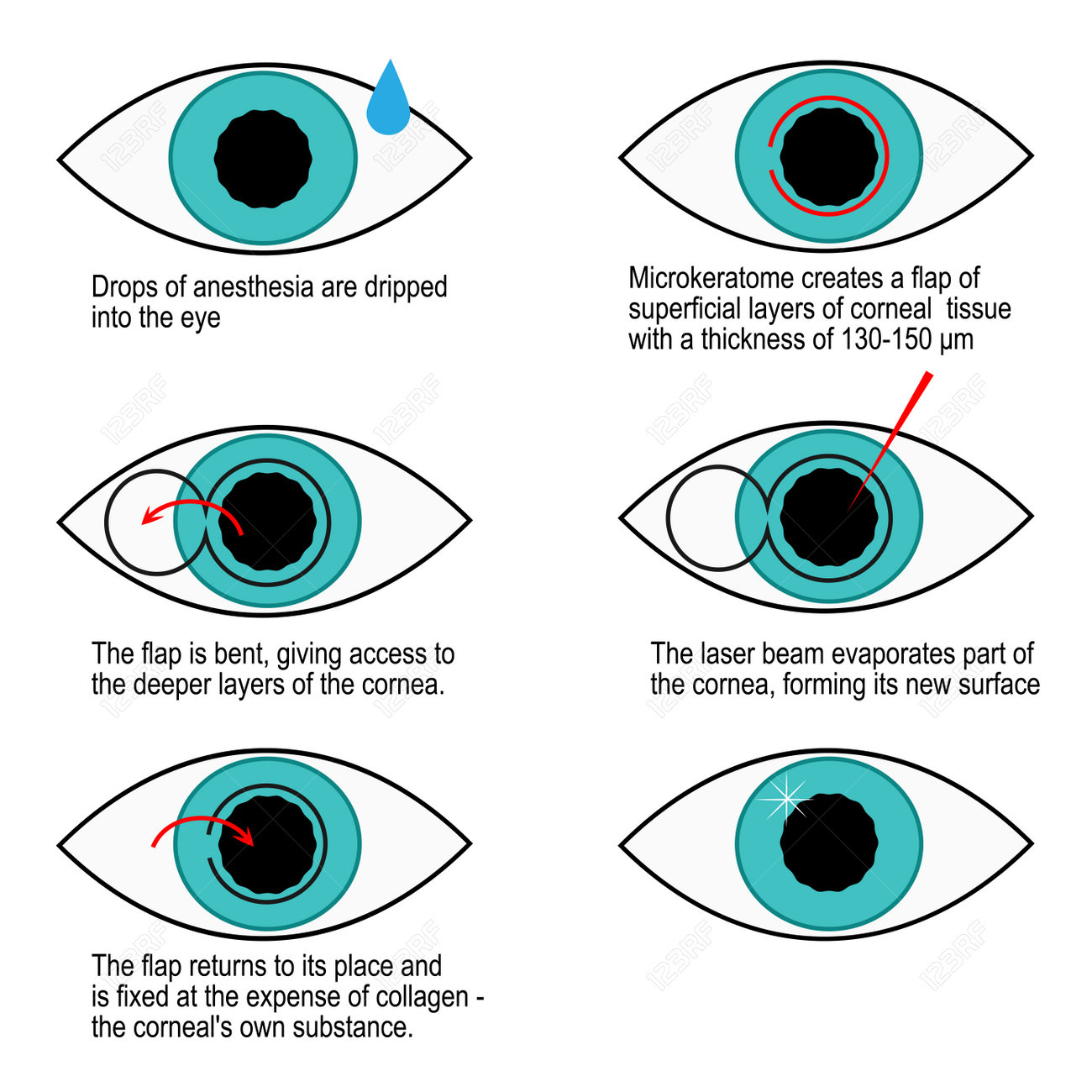This Short Article Aid You To Understand The Refractive Lens Exchange After Lasik

Authored by-Dotson McCann
Refractive Lens Exchange (RLE) is a risk-free as well as reliable vision corrective treatment that is often made use of for individuals who can not get LASIK or various other laser vision correction procedures.
During RLE, the all-natural lens of the eye that has actually come to be stiff and can no more focus is eliminated and replaced with a manmade man-made implant. This allows the patient to see plainly at both far and wide ranges without glasses or get in touch with lenses.
LASIK vs. RLE
LASIK, PRK and other laser vision improvement treatments boost refractive errors like nearsightedness (myopia), farsightedness (hyperopia) or astigmatism by reshaping the cornea. These therapies additionally get rid of or lower a person's demand for glasses or contact lenses.
Refractive lens exchange, or RLE, is a different strategy to elective refractive surgical procedure than laser vision adjustment. salt lake city tribune changes the eye's natural lens with a man-made intraocular lens, or IOL.
This procedure can remove the demand for glasses or contacts and also avoid future cataract advancement. It is an excellent alternative for clients who do not receive LASIK or that are older and also have presbyopia, or age-related fuzzy near vision.
During RLE, your eye's all-natural lens is removed and also replaced with a man-made IOL that supplies clear vision at a single focusing range. The selection of IOL relies on your treatment assumptions and also a Mittleman Eye specialist will assist you choose the best type for your distinct visual needs.
RLE vs. PRK
RLE (Refractive Lens Exchange) is a newer sort of vision improvement surgical treatment that can be extra reliable for some individuals than LASIK or PRK. It can additionally assist improve an individual's quality of life by reducing the requirement to put on glasses.
RLE can be a wonderful option for individuals who have a high degree of myopia, hyperopia or astigmatism that would certainly make them ineligible for LASIK or PRK. It is likewise an excellent selection for people who have age-related vision problems, like presbyopia or cataracts.
Refractive Lens Exchange is normally done for people over 40 and that have a modest to high level of refractive error. It is likewise beneficial to people who have a thin cornea because they do not require to bother with the flap of their cornea being damaged by LASIK.
RLE vs. Monovision
Refractive lens exchange, or RLE, is a safe and also efficient vision modification procedure that eliminates your eye's all-natural lens, and changes it with a man-made intraocular lens (IOL). https://www.medgadget.com/2020/05/custom-lasik-surgery-market-size-worth-usd-4-1-billion-with-cagr-of-9-6-by-2027-future-trends-share-analysis-dynamics-and-insights.html is generally used to treat presbyopia, or the age-related blurring of up-close vision.
Patients who have actually not been candidates for LASIK as a result of their corneal density might be perfect for RLE. This procedure likewise makes clients immune to developing cataracts, a typical eye condition that triggers clouding of the natural lens.
As an alternative to monovision LASIK, refractive lens exchange is an outstanding remedy for older grownups that require analysis glasses. This procedure is likewise useful for people with extremely thin corneas that are not candidates for laser eye surgery.
RLE vs. Monofocal IOLs
Refractive Lens Exchange (RLE) is an excellent choice for patients who do not get approved for LASIK or for those who intend to improve their vision at several distances. Throughout RLE, your natural lens is replaced with an intraocular lens (IOL) of your option based upon your demands and choices.
For individuals who want clear vision at one distance only, a monofocal IOL is suggested. Making use of the method referred to as micromonovision, a monofocal IOL can be put that fixes distance and also near vision at the same time.
Alternatively, patients can select a multifocal IOL to give clear vision at numerous ranges at a single focus point. Multifocal IOLs are also referred to as extended deepness of emphasis or fitting IOLs.
Throughout the RLE treatment, your all-natural lens is removed through a tiny cut less than 3mm and changed with an IOL that is put with the exact same opening. Your eye will certainly recover quickly and you should have the ability to resume regular activities within a week of surgery.

